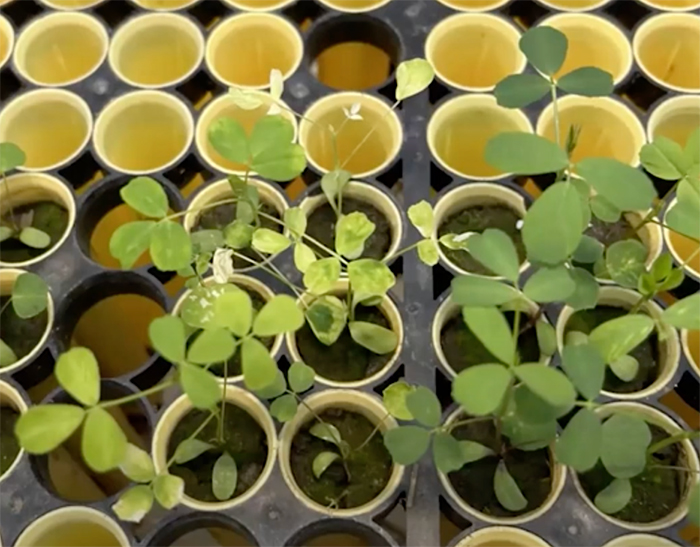
During my years as an extension agent, I would occasionally be called out to a farm for the purpose of evaluating a failed or thin new alfalfa seeding field. Often, the farmer and seed brand representative would also be on hand.
There are lots of reasons for a failed alfalfa seeding, some easier to decipher than others. Environmental conditions and seeding depth are often the cause, but when those two factors are eliminated, some farmers like to point to “bad seed.” This always led to an awkward situation in the field with me standing between the farmer and seed representative as the swing vote.
The truth is that “bad seed” is almost never the right answer if it was purchased from a reputable seed company. Quality control is simply too good to allow that to happen, at least for alfalfa.
There is another reason for failed new seedings that is becoming more common in recent years, and that is herbicide carryover. It’s certainly something to be aware of this spring if your past growing season was abnormally dry.
During a recent Focus on Forage webinar offered by the University of Wisconsin Division of Extension, Mark Renz discussed the raised likelihood of herbicide carryover problems in the Midwest this year.
Renz, a weed management specialist with the University of Wisconsin-Madison, noted that some common herbicides persist in the soil after being applied, and this is why they are so effective at offering season-long weed control. On the flip side, it’s also important that these herbicides eventually degrade to avoid injury to a subsequent crop that may be sensitive to the chemistry.
Wet and warm enhance breakdown
How quickly an herbicide degrades will depend on a number of factors, including the active ingredient, rate applied, soil type, and soil organic matter content. Coupled with these factors, environmental conditions such as soil moisture and temperature can have a large impact on degradation rate. Favoring a faster breakdown of the herbicide are wetter and/or warmer soils.
It was the drier than normal growing season in 2023 that has Renz concerned that herbicide carryover might be a bigger factor in 2024 than what we typically experience.
“Herbicide labels vary in how they guide growers as to the viability of planting alfalfa following a previous year’s application,” Renz said. “Some offer a specific timeline in months with a minimum precipitation requirement. Others don’t prohibit seeding alfalfa but may highly discourage such a practice due to the likelihood of injury. It’s extremely important to read any footnotes on herbicide labels that pertain to alfalfa planting,” Renz added.
Overall, the weed scientist feels herbicide injury to alfalfa is becoming more common because residual herbicides are being used with higher frequency in crops rotated with alfalfa, and they are often being applied mid-season to control late-emerging weeds. About half of the common herbicides used on corn have a 10 month or greater alfalfa plant-back restriction. “This means that if they are applied in mid- to late June, seeding alfalfa the next spring may not be possible,” Renz advised.
Injury varies
Although sometimes herbicide injury to alfalfa is obvious, in many instances the symptoms are more subtle. There may only be a slight yellowing, reduced shoot growth, root pruning, or reduced root growth. Unless there is a nontreated area in the same field to compare to, the injury may go unnoticed even though production will be impaired.
“I used to only be concerned with herbicides that had a 10-month residual or more, but now I’ve pushed that back to anything over eight months,” Renz said. “We’re particularly worried about clopyralid and atrazine.”
To avoid herbicide injury issues to alfalfa, Renz offered the following recommendations:
1. Follow label restrictions for rates and plant-back periods. Read the footnotes.
2. Rotate active ingredients to avoid buildup in the soil.
3. Use tillage to dilute herbicides and enhance degradation.
4. Delay planting alfalfa until later in the spring if injury concerns exist.

